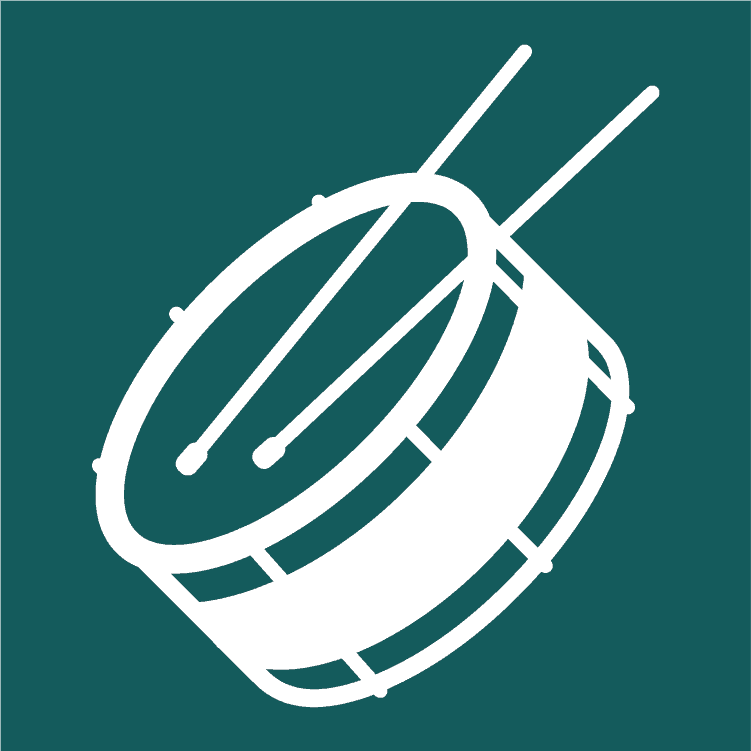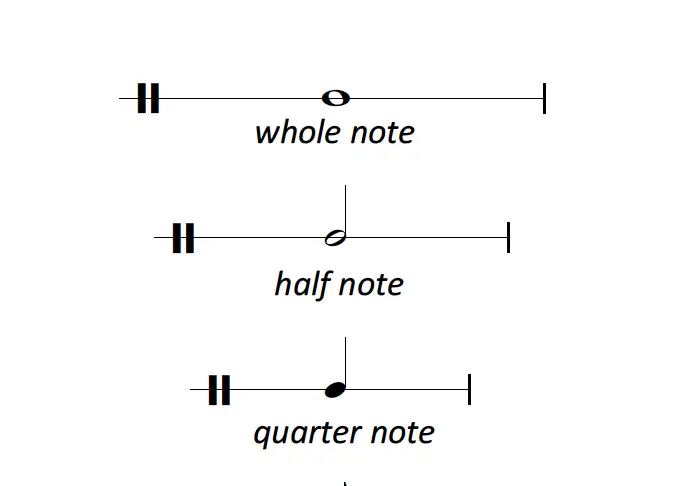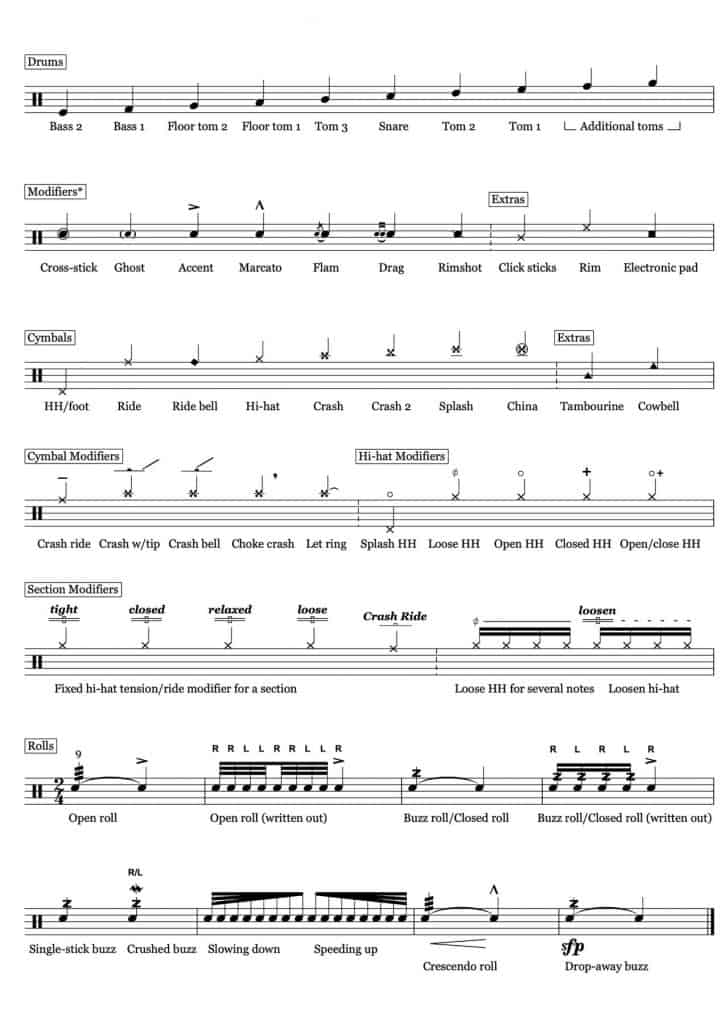how to Read Drums Sheet Music
Reading drums sheet music isn't as challenging as you imagine

Finding out how to read music is a really essential skill to have. But it’s also a completely different skill from actually playing the drums. So just why should we deal with them as one and the same! As a segment inside our ‘Beginner’s Guide To Learning The Drums’, we hope to provide you with the know-how and information to read music better.
Musical Notation - where did it start?
Music is actually a language; and similar to any language, it has a written form. Notation allows musicians around the world a tool to communicate. A composer writes their piece with certain symbols, and if you can read music, you can understand it, decipher it, and ultimately play it.
But when was it developed? Well, truly early examples have been discovered on natural stone tablets as long ago as 2000 B.C. But the modern-day variety we read now was actually produced by Catholic Monks to help make church music worldwide a standard style!

Why Bother Learning To Read Music?
Let’s be totally honest. Understanding how to read music is a tricky thing to do.
If you are planning to perform pop, it’s not so crucial that you figure out how to read music. Having said that, if you do, you’ll find life much easier later on.
You may absolutely go down this path if you choose. Just know that like riding a bicycle, reading music is a skill you never forget – and the benefits massively overshadow the cons.
Which Approach Should You Use?
When you were understanding how to read and write, did your educator handle them as the same task? Probably not. Physically writing letters and finding out how to control a pencil, is a different skillset than reading how specific letters join together to produce a word.
Finding out how to read music is identical.
The process of playing the drums is actually a completely different skill from the process of reading the music which is positioned before you. Yes, you will find a link. But it’s not precisely the same. So any educator who is not separating out the two of these tasks, and teaching them through unique methods, needs to be fired!
Understanding Drum Notation
The drum Staff
Because the drum kit is a relatively new instrument, there can be a little bit of ‘writers interpretation’ when it comes to reading music. However, in general it follows very simple and easy to recognise patterns based around a group of 5 straight lines called a stave. Notes can either be written in the space between the lines, or on the lines.
In general, circles (black or white) indicate a drum is being hit and a cross or ‘x’ shape indicates a cymbal, unless the composer wants you to play a drum or cymbal in a particular way, which we will cover in a moment.
There’s a really handy way of looking at which drum you play a note on – the higher up the stave it is, the higher up physically it is on the drum kit.
How To Tell The Length Of The Notes
Whenever we read through music, we read the music score from the left-hand side to the right. While we have already learned which precise note to play, we now must find out how long to play it for. Happily, the printed note actually tells us this as well.
The actual shape of the note and if it’s filled in, informs us the time to hold the note for.
- A whole note (or if you are in the UK, it’s called a Semibreve) is an empty circle and lasts four counts.
- A half note (or if you are in the UK, it’s called a Minim) adds a stem and lasts two counts.
- A quarter note (or if you are in the UK, it’s called a Crotchet) fills in the circle and lasts one count.

Understanding Drum Notation
basic drum notation
Drums
Our main drum, the snare drum, is placed in the 2nd space down. The highest space, between the top two lines, is the high Tom. The 2nd from top line going through a note indicates the middle Tom, the third space down is the floor Tom and of course the lowest note, either just above or just below the bottom line is the bass drum.
Cymbals
Crosses, or ‘x’s, sat right on top of the stave indicate the hi-hat.
Crosses higher than the hi-hat generally indicate crash cymbals.They are often easy to spot as they will probably be by themselves, eg. after a drum fill.
Crosses marked with the top line going through them, so slightly below the hi-hat, are ride cymbal notes. The composer will normally indicate with text too if they want you to move to the ride.
An X on the bottom or bass drum line means play the hi hat with your foot. This is often used in jazz or when you play the ride cymbal instead of the hi hat.
Exceptions
If you see a cross, or x, on the snare drum space (the 2nd space down) this means a cross stick or rim shot. This is usually played by crossing the stick over, resting your hand and the end of the stick on the drum and hitting the rim with the thicker end to produce a loud click sound.
A circle around the hi hat X’s means you should play the hi-hat open (ie with the foot lifted up).
A triangle, instead of a cross or circle, often means to play a cowbell or the bell of the (usually ride) cymbal. Assume it’s the ride cymbal bell unless otherwise instructed. You wouldn’t normally be expected to have a cowbell on your kit.
If you have a fourth Tom Tom, that is marked as having the third, or middle line going through it. Again, you wouldn’t normally be expected to have this on your kit. Three Toms are standard.
If there are any more specific instructions the composer has for you these would be written in text for you, probably at the beginning of the piece or just above the stave as you play, so don’t forget to check there before you start playing!
Advanced Drum Notation
If you want to learn some more advanced notation for the drums, and become a pro at reading drum music, then feel free to download our handy cheat-sheet below.


How To Read Drums Sheet Music - Summary
At last!
You have the information and facts, now go and use what you’ve acquired! What’s that old saying about taking a horse to water, but you can’t make it drink…
Not surprisingly, there exists a ton of information that I haven’t given you yet – but it’s all about handling the information and facts to never overwhelm you. When you might be confident with these facts, you’ll naturally uncover more…
About the Author
Lyndsay Evans
Drummer, percussionist and DJ based in the UK.
As well as sessions and playing with some incredible DJ's including Miss Kelly Marie, Boy George & Luke Slater, she managed to tour 5 out of the 6 continents in 12 months.
Lyndsay has just finished drumming on the west end stage with Adam Garcia and the boys of Tap Dogs before she went off on an Australian tour to see out the British winter.
Currently she has her own solo project, "She Plays Drums", where she DJs and plays percussion together!!
As well as DJing, Lyndsay has been playing drums and percussion for lots of well known people around the world, including Ricky Martin, Peter Andre, Eros Ramazzotti, The X Factor lot, Reverend & The Makers, Patti LaBelle, Katy Carr, Electric Dolls, The It Dolls, Hed Kandi, Jazzy Jeff, Luke Slater, Kelli Le Roc, Omar, Nile Rogers, Billy Bragg, Wyclef Jean, Omar Hakim, High On Heels, Kelly Rowland, The Black Eyed Peas and some Berbers up a mountain in Africa who were awesome.
Other posts by this author
Explore These Fascinating Things
Each week, on a Friday, I distribute the four Feature Friday e-mail. It’s a very simple idea that is made up of four excellent things I”ve discovered that week.
As long as it includes something connected with music, it can end up in the email. Consider it as a music pandora’s box!
Sign up for the 4 Feature Friday subscriber list, by clicking directly below.
Read the next post in this series:




